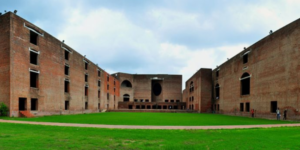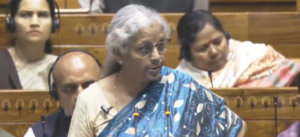Three words describe the recent judgment of the Meerut court on the Maliana massacre of May 23, 1987, in which 72 people – all Muslims – were killed. These three words are: “miscarriage of justice”.
After more than 800 hearings over three decades, the local court of additional district judge Lakhvinder Singh Sood on Friday, March 31, 2023, set free the 40 people accused of the massacre on the grounds of inadequate evidence against them.
The Maliana case originally involved 93 accused. In the 36 years since the carnage, many of the accused died, while others “could not be traced”, leaving just 40 to face trial.
As atrocious as the verdict is, however, the entire case has been a travesty of justice, right from the moment 36 years ago when the first information report (FIR) was filed.
The 1987 Meerut riots
The Maliana massacre took place against the backdrop of the riots in Meerut district, Uttar Pradesh, in May 1987. In what was supposedly a reaction to the opening of the disputed Babri Masjid in 1986, mobs of Hindus and Muslims clashed in Meerut city on May 17. Two days later, when curfew was imposed in the city, the state government sent 11 companies of the Provincial Armed Constabulary (PAC) to help the local police keep the peace. However, according to the local media at the time and later, the investigations by national media as well as non-governmental organisations, the PAC started attacking Muslims across the district instead.
On May 22, the PAC descended on the Hashimpura mohalla of Meerut and took away a large number of people in trucks while also looting and burning houses and shops. While some of the people taken away were sent to jails in Meerut and Fategarh, 42 Muslims were taken to the Upper Ganga canal at Muradnagar in Ghaziabad and the Hindon River near the Uttar Pradesh-Delhi border, where they were shot and killed. Their bodies were then thrown into the water. Meanwhile, 11 of the people placed in the Meerut and Fatehgarh jails died in custody.
The PAC arrived in Maliana the next day. Eye witnesses reported: “The PAC, led by senior officers including the commandant of the 44th battalion, R.D. Tripathi, entered Maliana about 2.30 pm on May 23, 1987, and killed more than 70 Muslims.”
Hundreds of locals accompanied the PAC contingent who entered Maliana with guns and swords. All the five entry and exit points of the locality were blocked before 72 people were killed. According to eyewitnesses, “death was raining from all sides and no one was spared, including children and women.”
Deliberate disarray
Since the carnage had been carried out by the police themselves, no first information report (FIR) was filed until Rajiv Gandhi, the then prime minister of India, visited Maliana along with the then chief minister of Uttar Pradesh, Vir Bahadur Singh.
When Gandhi asked for investigations and reports, one Yaqub Ali, a resident of Maliana who had been severely injured in the attack, was compelled by the police to sign a document that he later learned was an FIR. This ‘FIR’ listed 93 people as the accused in the massacre, all of them local people. No police personnel were named.
“I was one of those who were rounded up and mercilessly beaten when, without any provocation, the PAC men began attacking houses while the mob indulged in looting and rioting,” Yaqub Ali said.
He added: “My ribs were broken and I was in intense pain. I was made to sign the police complaint and didn’t even know what was written in it. It was much later that I learned that 93 Hindus had attacked us. The role of the PAC men has not even been mentioned.”
The names of the 93 accused were apparently lifted from the voter list of the area. While some of those named as accused had indeed participated in the massacre, many others had not. When the police began to seek these 93 people to arrest them, it was learned that some of them had died long before May 23, 1987. Others died in the midst of the proceedings of the case and still others went missing.
Alauddin Siddiqui, the lawyer representing the victims’ families told The Wire, “[The verdict] is an abrupt decision at a time when proceedings were still on. Hearing on the 36 post-mortems had not taken place and the accused had not been examined under Section 313 of the Criminal Code of Procedure (power of the court to examine the accused to explain evidence adduced against him).”
Even the witnesses had not been carefully questioned. Fewer than 10 eye witnesses were examined in court, though there were 35 witnesses in all.
Additional district counsel Mohan said, “There were several reasons spelled out for the acquittal. First, the police had not conducted an identification parade of the accused. Secondly, the police had allegedly put 93 random names from the voter list, including those who had died years prior to the carnage. Then, no weapon was recovered from the site.”
Mysterious investigations
A few days after the massacre, Vir Bahadur Singh officially declared 10 people dead. The next day, the district magistrate claimed 12 people had been killed, but in the first week of June 1987, after several bodies were found in a well, he accepted that 15 people had been killed. Altogether, the state government accepted 56 deaths in Maliana and provided the victims’ families with compensation of Rs 20,000. Years later, a further Rs 20,000 was added to this meagre amount, bringing the total to Rs 40,000.
On May 27, 1987, Vir Bahadur Singh announced a judicial inquiry into the Maliana killings under the Commission of Inquiry Act, 1952. The inquiry was finally ordered on August 27, 1987, by Justice G.L. Srivastava, a retired judge of the Allahabad high court. On May 29, 1987, the UP government announced the suspension of the PAC commandant R.D. Tripathi, who ordered the firing in Maliana. Interestingly, allegations had also been made against Tripathi during the 1982 Meerut riots. However, despite his involvement in the Maliani massacre, R.D. Tripathi was never suspended. Instead, he was awarded promotions in the service till his retirement.
The examination of witnesses from Maliana was hindered by the continued presence of the PAC. Finally, in January 1988, the Srivastava Commission ordered the government to remove the PAC. Altogether, 84 public witnesses – 70 Muslims and 14 Hindus – were examined by the commission, in addition to five witnesses from the administration. But it appeared that the commission’s proceedings had been affected by apathy and indifference. When it finally submitted its report on July 31, 1989, it was never made public.
While the Srivastava Commission worked on the Maliana case, the Uttar Pradesh government ordered an administrative inquiry into the riots that had taken place in Meerut between May 18 and 23, 1987. However, it excluded the events in Maliana and the custodial killings in the Meerut and Fatehgarh jails.
The panel, headed by Gian Prakash, the former Comptroller and Auditor General of India, consisted of Ghulam Ahmad, a retired Indian Administrative Service (IAS) official and a former vice-chancellor of Avadh University, and Ram Krishan of the IAS who at that time was the secretary at the Public Works Department.
The panel was asked to submit its report within 30 days, which it did. On the grounds that the inquiry was of an administrative nature ordered for its own purposes, the government did not place its report before the legislature or public. However, The Telegraph, the Kolkata-based daily, published the entire report in November 1987. It threw no light on the events of May 23.
PIL for justice
After 34 years had passed without any movement on the Maliana case, I filed a public interest litigation (PIL) before the division bench of the Allahabad high court on April 19, 2021, together with Indian Police Service officer Vibhuti Narain Rai, a former director general of the Uttar Pradesh police.
Our co-petitioners were Ismail, a victim of the Maliana massacre who lost 11 members of his family on May 23, 1987, and lawyer M.A. Rashid, who conducted the case in a Meerut trial court.
In the PIL, we said that more than three decades on, the Maliana massacre case and other custodial killings in Meerut during the 1987 riots had not progressed much since key court papers, including the FIR, had mysteriously gone missing. We also accused the Uttar Pradesh police and PAC personnel of intimidating victims and witnesses into not deposing and asked for either the release of the Srivastava Commission report or for the judges to request a copy of the report in a sealed cover.
We also pleaded for the establishment of a special investigation team to look into the events of 23 May, 1987, and conduct a fair and speedy trial, and sought adequate compensation for the families of the victims. In 2018, after 16 police personnel were convicted in the Hashimpura case, the families of the 42 Muslims killed received Rs 20 lakhs each as compensation because the killings had been carried out by the police. However, since there is no mention of police personnel in the FIR signed by Yaqub Ali, the families of the Maliana victims received only Rs 40,000 each.
After hearing the PIL, Justice Sanjay Yadav, the then acting chief justice of the Allahabad high court, and Justice Prakash Padia ordered the Uttar Pradesh government to file a counter-affidavit. “Taking into consideration the grievance raised in the petition and the relief sought, we call upon the State to file the counter affidavit and para-wise reply to the writ petition,” the order said.
Noted human rights activist and senior Supreme Court lawyer Colin Gonsalves appeared for us in the case. The PIL is still pending in the Allahabad high court, awaiting the final outcome. Now that the Meerut verdict has acquitted the accused, it is possible that the state government will request the court to close the case.
However, the people of Maliana refuse to accept the May 31 verdict of the Meerut court. They will soon challenge the verdict in the Allahabad high court.
(Qurban Ali is a senior journalist who covered the Meerut-Maliana riots of 1987 and was an eyewitness to many incidents. Courtesy: The Wire.)




